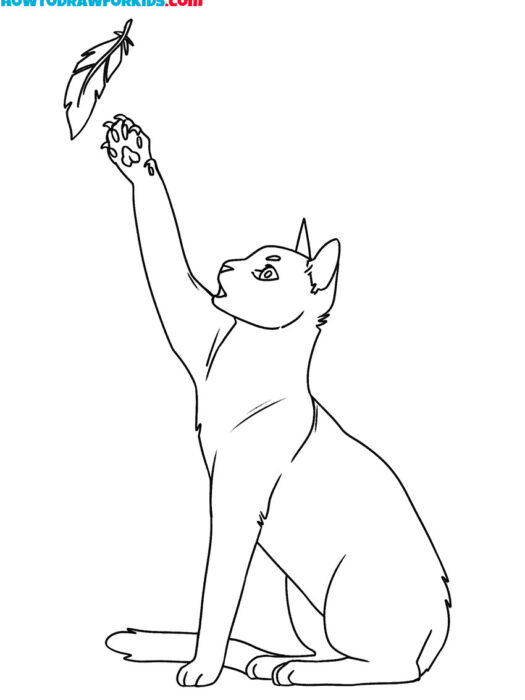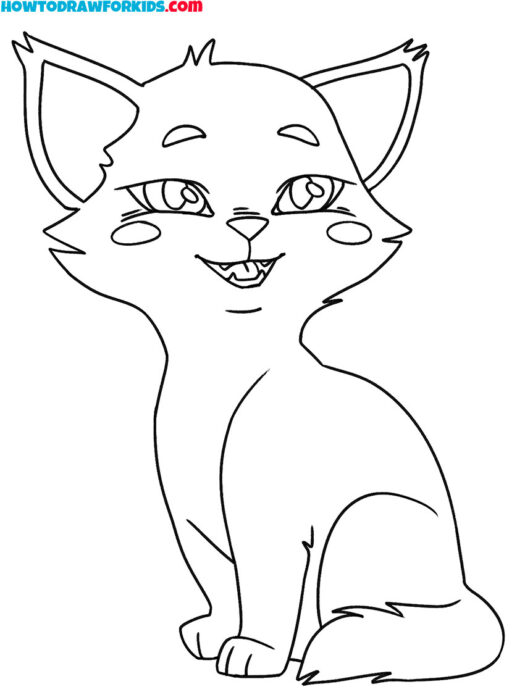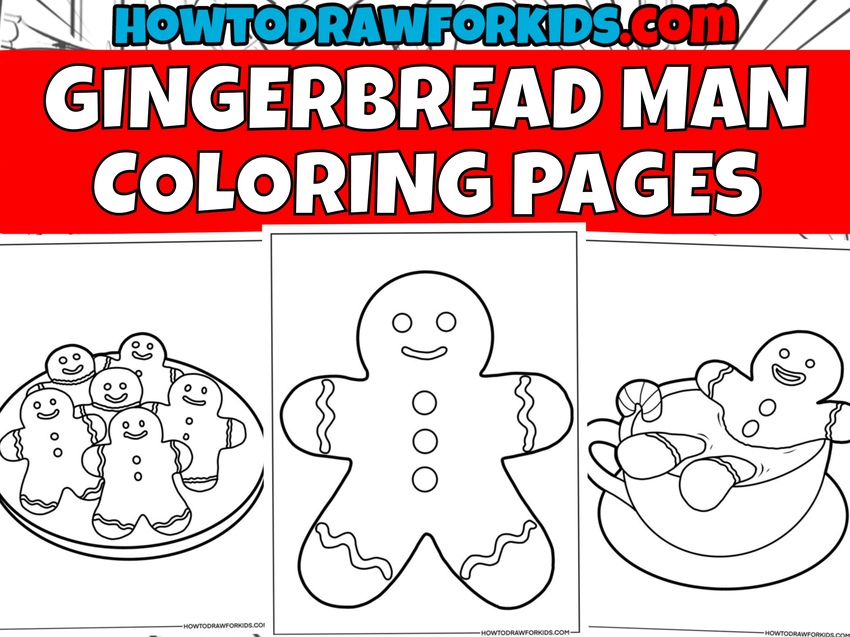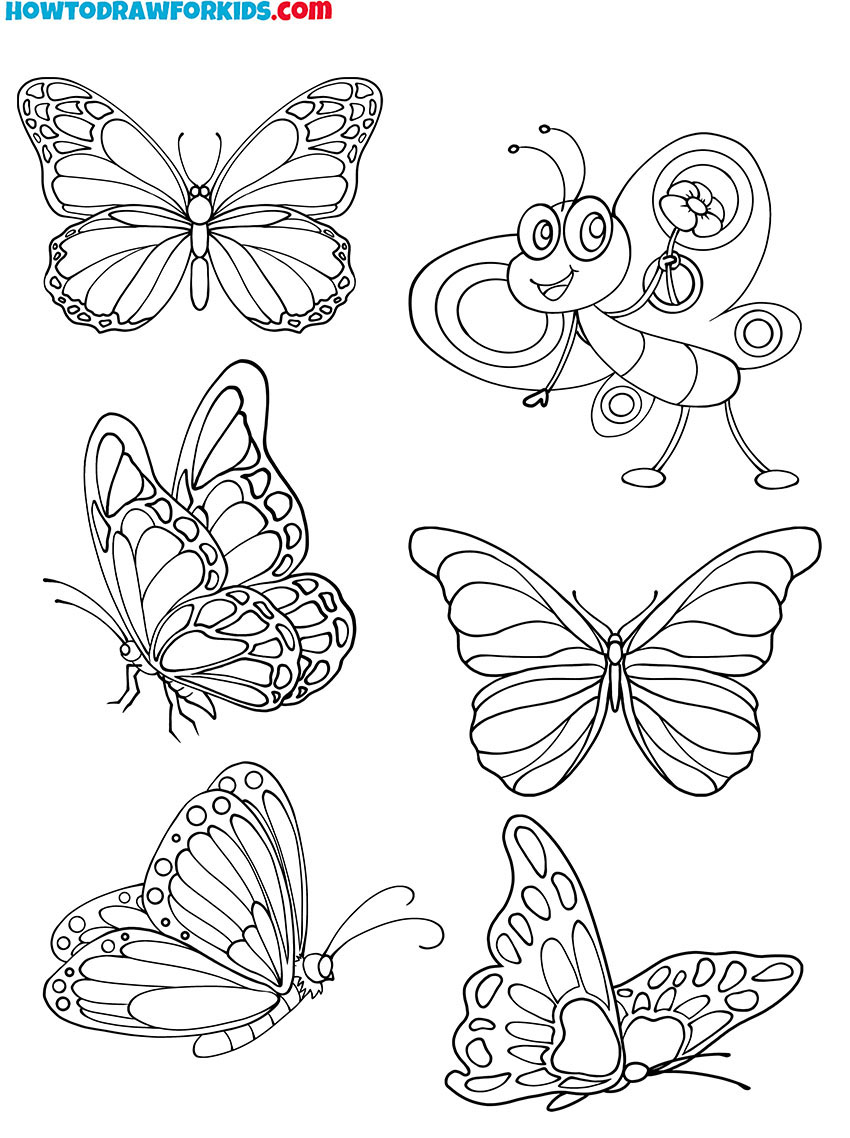Cat Coloring Pages
This collection of cat coloring pages includes various cartoon, stylized, and realistic cat drawings in different poses and scenes.

Cat Coloring Pages: Introduction
When working with these cat coloring pages, it is advisable to match the coloring style to the type of illustration. Cartoon-style cats are usually best colored using bold, simple colors with minimal shading. This aligns with their design.
In contrast, realistic cat drawings should generally be colored using more subdued, natural tones. For example, you can add more shadows and halftones to cat illustrations.
Pay attention to the light source in realistic drawings, as this will affect how you shade the fur and highlight specific areas. You can also try different approaches, such as using gradients to create a smoother transition between colors, which may be more suitable for realistic illustrations.
The cat coloring pages also provide an opportunity to learn about additional nuances in coloring. For example, in cartoon cats, brighter eye colors can make the drawings even more expressive, while for realistic cats, using more muted tones may add to the overall lifelike appearance.
Cat Coloring Pages
Color Schemes for Cat Coloring Pages
When coloring cats, both the style of the illustration and the breed of the cat play an important role in determining how to approach the task. Each style and breed may require different methods to achieve a suitable result.
Cartoon-style cats, for example, are generally drawn with simple, exaggerated features. To color these cats, it is advisable to use bold and flat colors, keeping shading minimal and creating strong, clear outlines. A limited palette of bright colors works best to create simplicity.
Shading can be lightly applied, but detailed work is not necessary. The fur can be colored in a single shade, with small amounts of darker shading along the edges. Eyes and noses in cartoon cats can often be colored with bright, non-realistic tones.
For more realistic cat illustrations, the approach needs to be more detailed and subtle. It is important to choose natural colors that match the actual fur patterns of the breed. Begin by applying a base color that reflects the general tone of the cat’s fur, then add layers of different shades to create more realistic look.
Strokes of darker shades can represent shadows, while lighter strokes can add highlights. For realistic eyes, multiple shades should be used to illustrate the light reflections and shadows within the iris.
Stylized cats, which fall between cartoon and realistic styles, require a different balance. These illustrations often have exaggerated shapes but with more attention to detail than cartoon styles. In this case, it’s best to select colors that match the overall design but maintain some natural elements.
Common Mistakes
When working on cat coloring pages, it’s easy to make some common mistakes, especially for those who are new to coloring. Below are a few frequent errors to watch out for and how to avoid them, helping ensure that your final coloring looks natural and well-executed.
One common mistake when coloring cats is selecting unrealistic fur colors, especially when working on more realistic or stylized illustrations. For example, coloring a domestic cat with bright purple or neon green fur can make the image appear less natural.
While creativity is important, if you aim for a more accurate look, it’s helpful to research cat breeds or refer to real-life cats. Stick to natural colors like shades of brown, gray, black, white, or orange, depending on the breed. Cartoon-style cats can handle more vibrant and unconventional colors, but even then, using color schemes that complement each other is essential.
Using a single, flat color across the entire cat without variation can make the illustration look flat and unrealistic. Realistic cats usually have variations in their fur color due to lighting, breed, and fur patterns. Even a black cat will have highlights and lowlights in its fur.
A mistake some people make is coloring the cat in just one tone and not adding any shading or highlights, which results in a two-dimensional look. Make sure to incorporate different shades and blend them to create more realistic look.
Conclusion
As you complete the cat coloring book, there are many more different cool activities available on my site. It contains a wide range of coloring pages, which include various themes such as popular characters, vehicles, and other topics.
In addition to coloring pages, the site offers a giant collection of drawing tutorials. These include step-by-step guides for drawing different subjects, including a tutorial on how to draw a sleeping cat or a cute and simple guide on how to draw a cat face. The tutorials are created to be easy to follow and provide clear instructions on sketching and detailing the subject matter.
For updates on new content, such as additional coloring pages or new drawing tutorials, you can follow the site on social media. This ensures that you are informed about the latest tutorials and any updates that might be of interest.






























